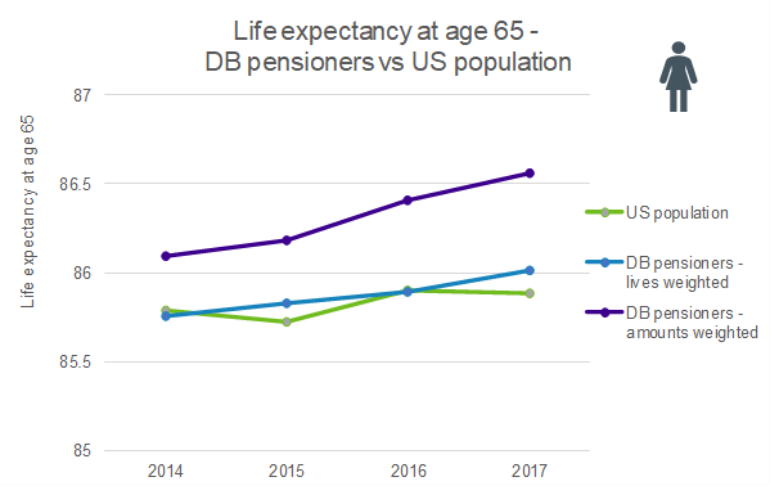Question:
Have recent improvements in mortality rates been experienced differently by Defined Benefit pension plan participants than by the general US population?
Answer:
Yes, in the recent past mortality improvements have been much slower in the US population than in our data set of around 100 single employer Defined Benefit pension plans.
The charts below show total period life expectancy at age 65 over the period 2014-2017 for the general US population, and our data set with the life expectancy average weighted by lives and by pension amounts (full details of the methodology can be found in our recent Research Note 21-08)


Source: 2021 Club Vita analysis https://www.clubvita.us/collaborative-research/longevity-inequality-in-the-us
Key takeaways:
- The blue lines are above the green lines, highlighting the select effect of corporate DB pension plan membership: on average DB pension plan participants have longer life expectancies than the general population.
- The purple lines are above the blue lines, highlighting the wealth effect on longevity: people with higher pensions have longer life expectancies.
- The blue and the purple lines have steeper slopes than the green line, indicating that pension plan participants have seen faster improvements than the general population. In fact, over the period 2014-2017, our DB population saw annualized improvements of 1.4% (men) and 1.3% (women) compared to 0.6% (men) and 0.5% (women).
The key questions are:
- Will these trends continue post pandemic?
- Should we allow for these differences in recent trends when projecting longevity rates into the future with improvement scales? And if so, how?
- Has this effect been experienced in public sector and multiemployer plans as well?
- Has there been a difference in trends between participants of different socio-economic backgrounds?
What do you think?




